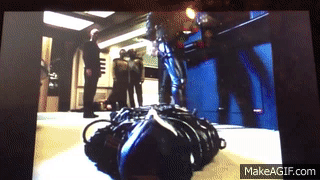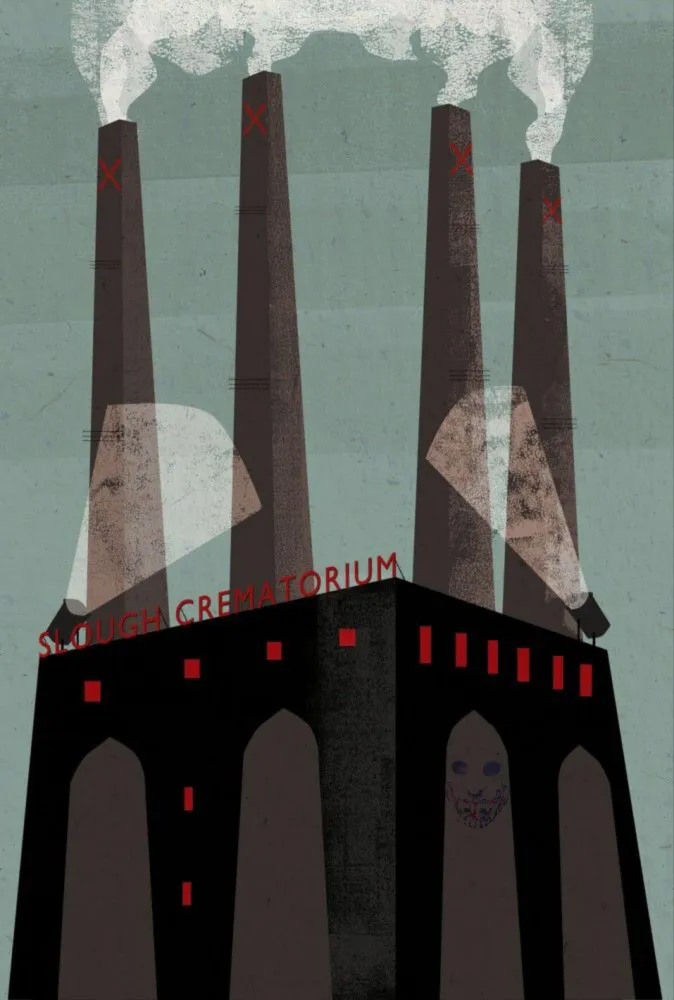
"Predictive programming is a subtle form of psychological conditioning provided by the media to acquaint the public with planned societal changes to be implemented by The Powers That Be. If and when these changes are put through, the public will already be familiarised with them and will accept them as ‘natural progressions’: thus lessening any possible public resistance and commotion. Predictive programming therefore may be considered as a veiled form of preemptive mass manipulation or mind control" source
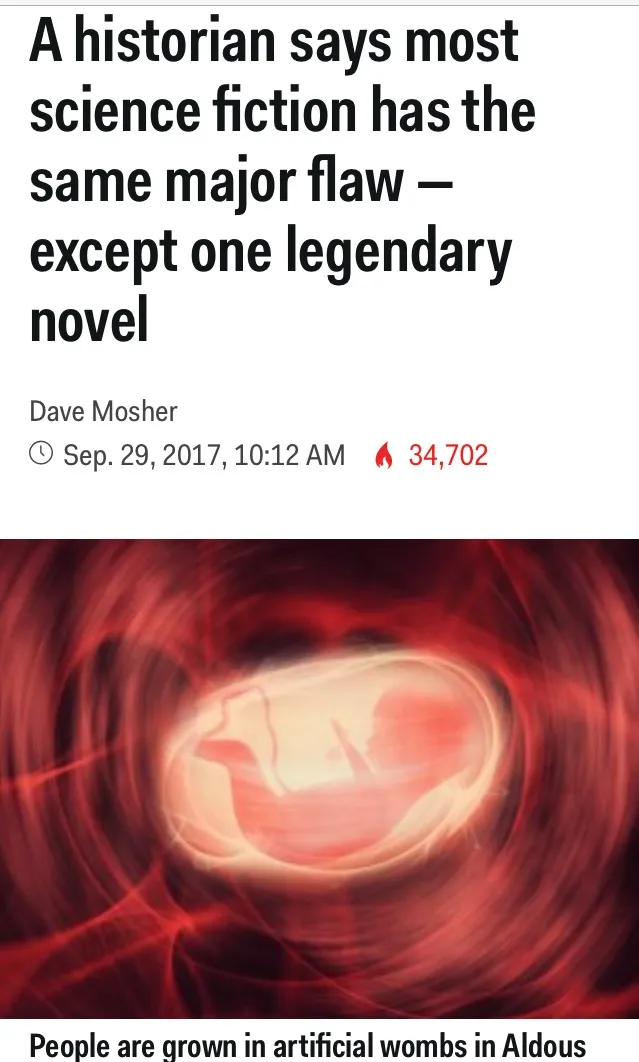
"If there's one book or movie that best foretells what humanity could become, though, it's Aldous Huxley's 1932 novel, "Brave New World," according to Michael Bess, a historian and author at Vanderbilt University."
"In Chapter 5 Part I, Lenina and Henry have finished playing Obstacle Golf as the courses are closing; then, they climb into the helicopter and start back. As they hover over the landscape, Lenina asks Henry about the purpose of the smoke-stacks with "balconies" around them. Henry replies that they are phosphorous recovery:"
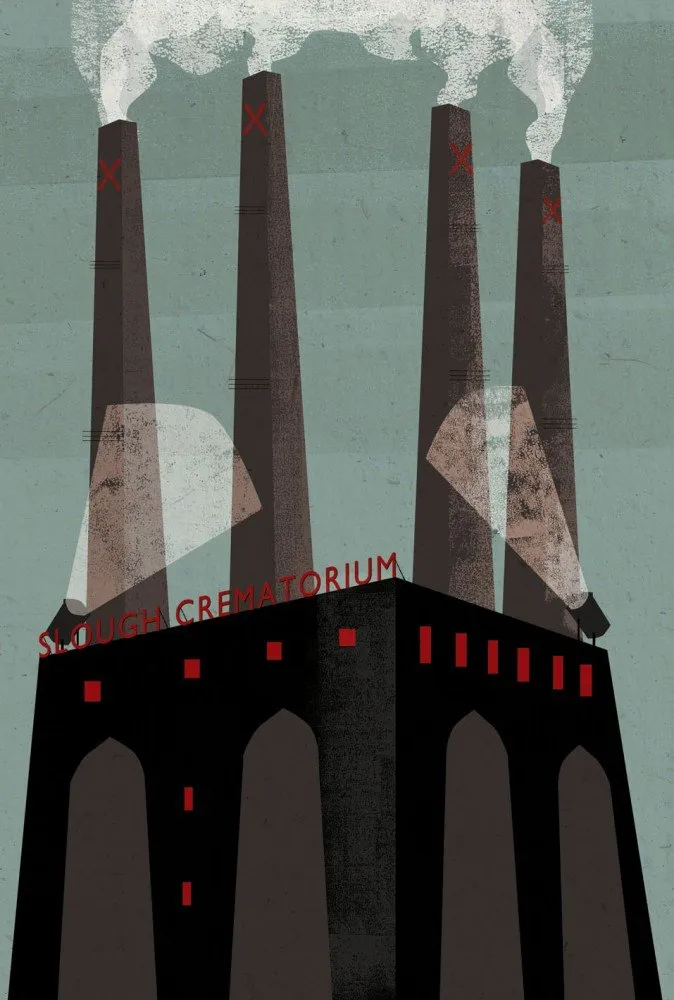
"on their way up the chimney the gases go through four separate treatments. Phosphorous used to go right out of circulation every time they cremated some one. Now they recover over ninety-eight percent of it....Fine to think we can go on being socially useful even after we're dead. Making plants grow."
*"All men are physio-chemically equal," said henry sententiously. "Besides, even Epsilons perform indispensable services." *
"Phosphorus recovery is another way in which the genetically manufactured beings of the New World are further dehumanized." source
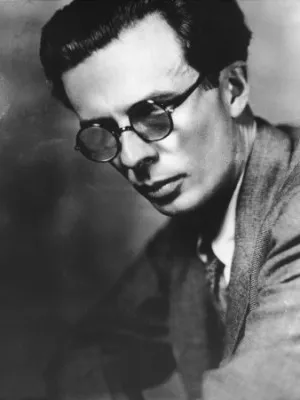
"In the 19th century, the eminent biologist Thomas Huxley, F.R.S., was known as "Darwin's Bulldog" for his defense of Charles Darwin's theory of evolution. He was the founder of a distinguished family tree, including grandsons Aldous Huxley (the writer), Sir Julian Huxley (the first Director General of UNESCO and founder of the World Wildlife Fund), and Sir Andrew Huxley (physiologist and Nobel laureate). You can find out more about the Huxley family at Wikipedia. Consequently, Aldous Huxley, the writer, was in a position to realistically assess future bio-technology scenarios when he wrote "Brave New World" in 1932. The novel describes a dystopian world in which happiness is dispensed in the form of government-issued pills called "Soma" (Prozac?) and human embryos are artificially cultivated according to the needs of the ruling elite. The novel was intended as a warning of what could happen if bio-technology became a tool for social control. His vision is not far removed from what could actually be achieved with present day bio-technology." source
Also check out "Spies in Academic Clothing"
Hey peoplekind! So, if you made it this far, allow me to get to the point. Below is the story that caught my attention and reminded me of the book Brave New World. Now you may or may not see the connection that I'm seeing. But bear with me and I'll break it down as we read through it together. Cool?...Alright!
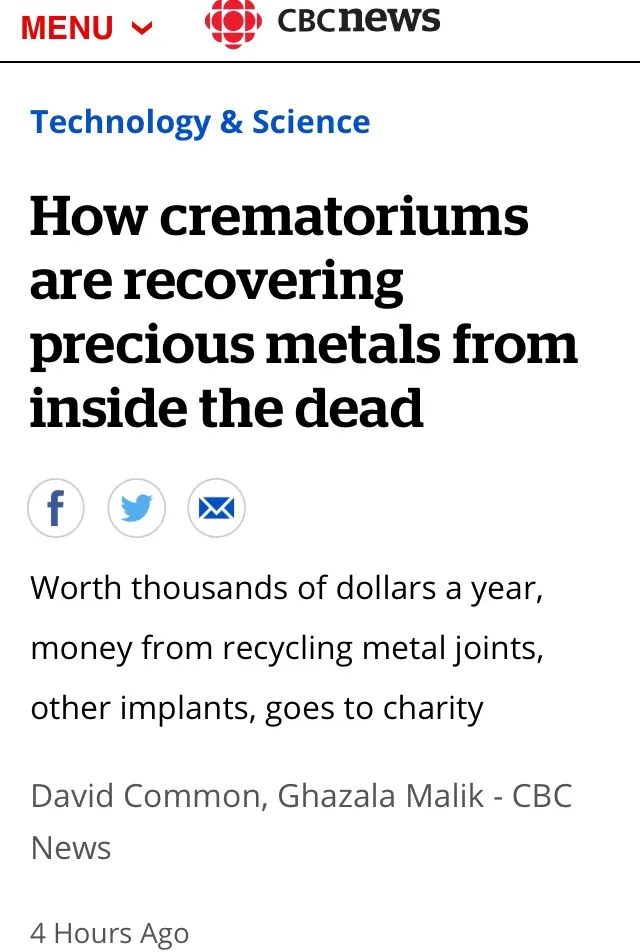
Ok, so what venomnymous? They are recycling implants, what's wrong with that?
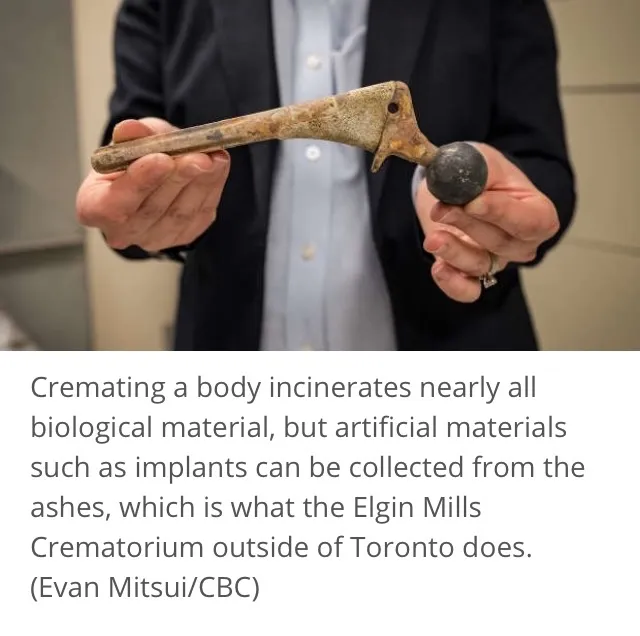
Well, let me put it this way. When it comes to things they report on in the msm. They frame it in a way that is positive and uplifting. Leaving the reader into thinking how good it is. "oh they are recycling and turning those materials that the dead no longer need into something useful again" and granted, that is true.
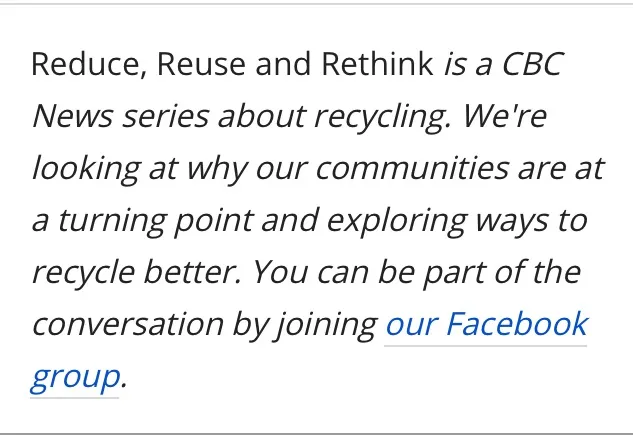
But, This article isn't about recovering stuff inside dead bodies. It's about associating bodies with objects, objects to be recycled. Just look at the series they are including this article under. "Reduce, Reuse and Rethink"
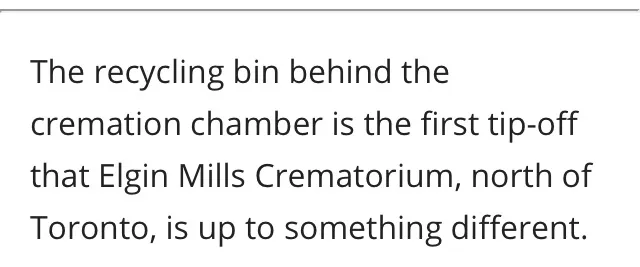
Reduce(humanity to objects),Reuse ( Turn them into resources), Rethink (Recondition your brain to have no humanity, to see humans as resources).
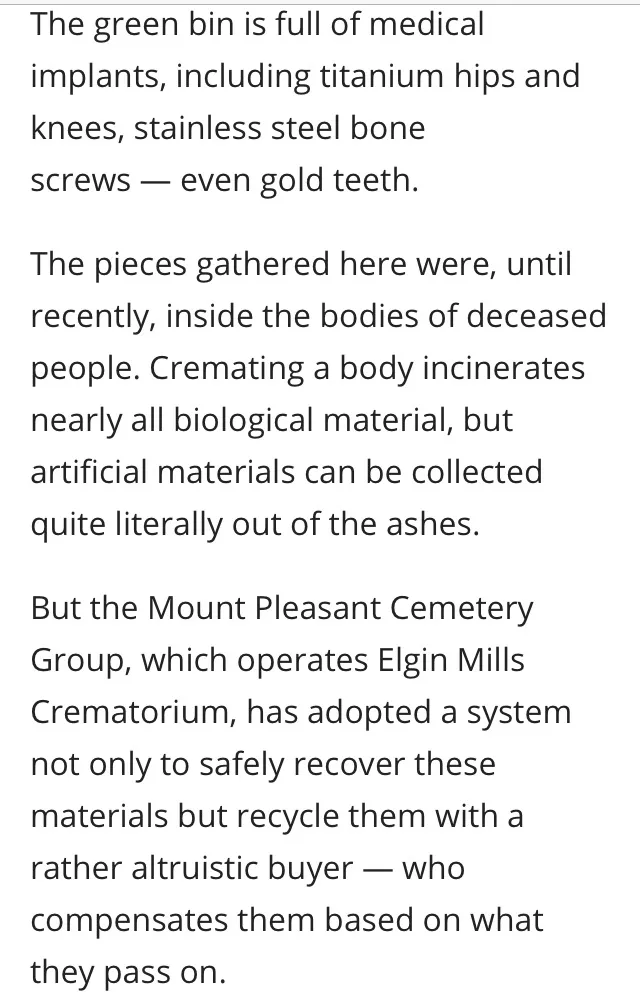
A recycling bin for implants today, tomorrow a bin for dead bodies, to be shipped to the plant to be 'recycled'.
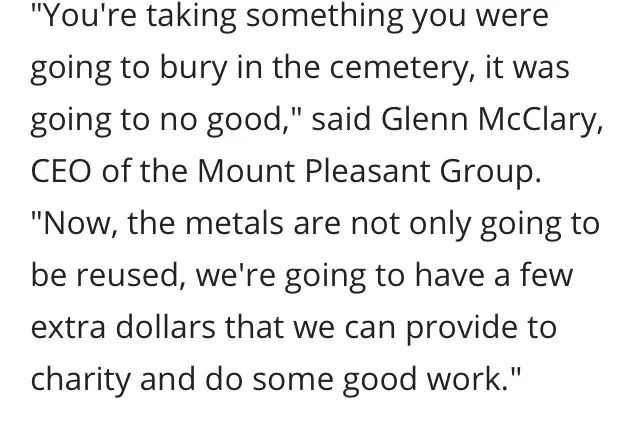
Well for one thing, how many people actually bury ashes? Especially with implants and jewelry or whatever? That doesn't happen. But see how they manipulate you by saying it like that? Like they were just tossing all this stuff in the dirt with your grandmother's ashes. No! That makes no sense. But you are sure grateful now knowing, that there is a service putting a stop to the waste huh?
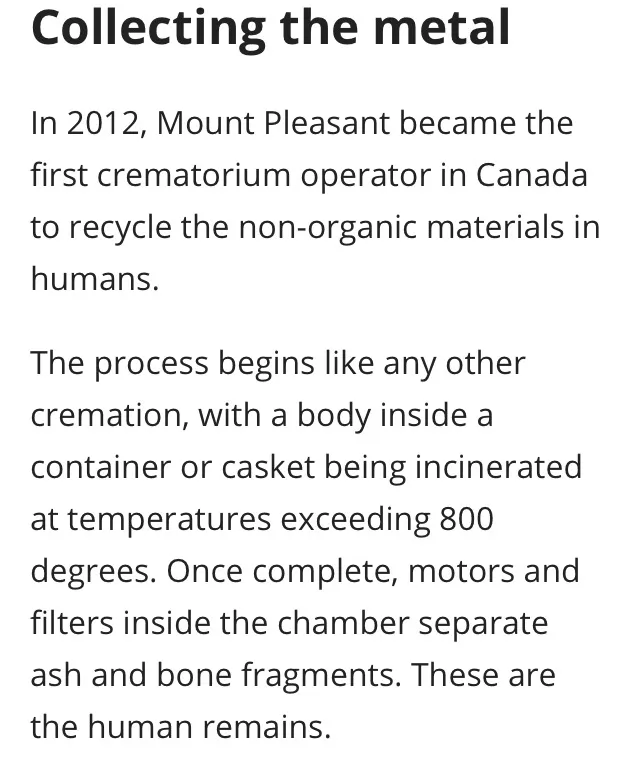
Charity, recycling, environmentally friendly. These are buzzwords to lead you to one way of feeling. Positive! "It's a good thing." - Martha Stewart
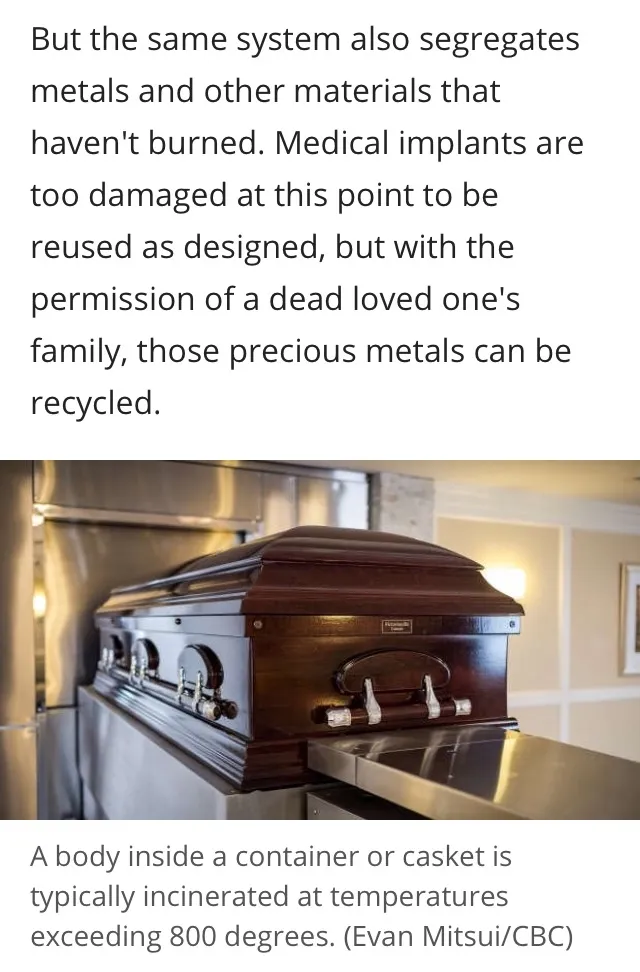
Don't get me wrong, I'm not saying they are bad things, I'm just saying that they are using positive action to condition you and open you up for them to take it further.
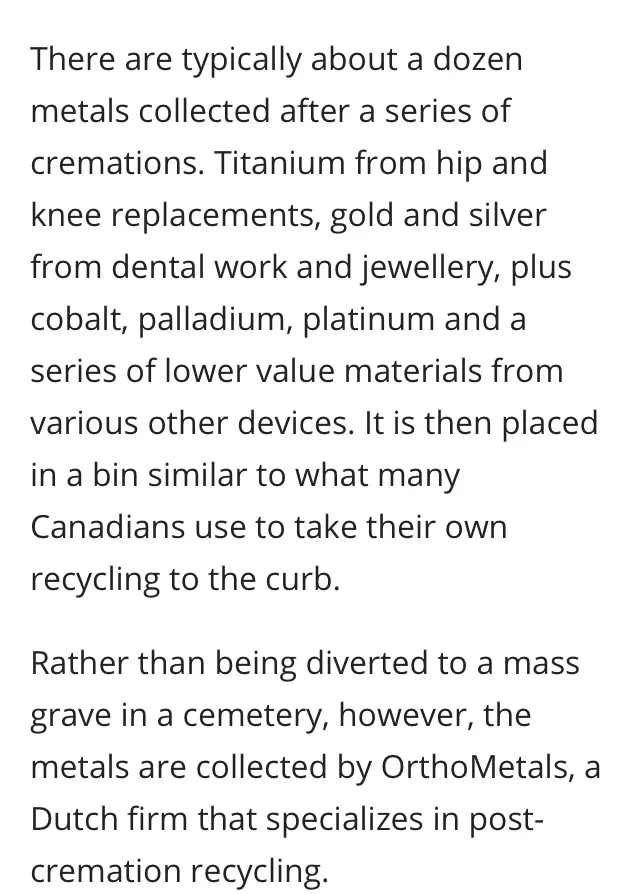
They will push the envelope and test your reactions. They do this over and over. It's all a big study and we are the subject rats.
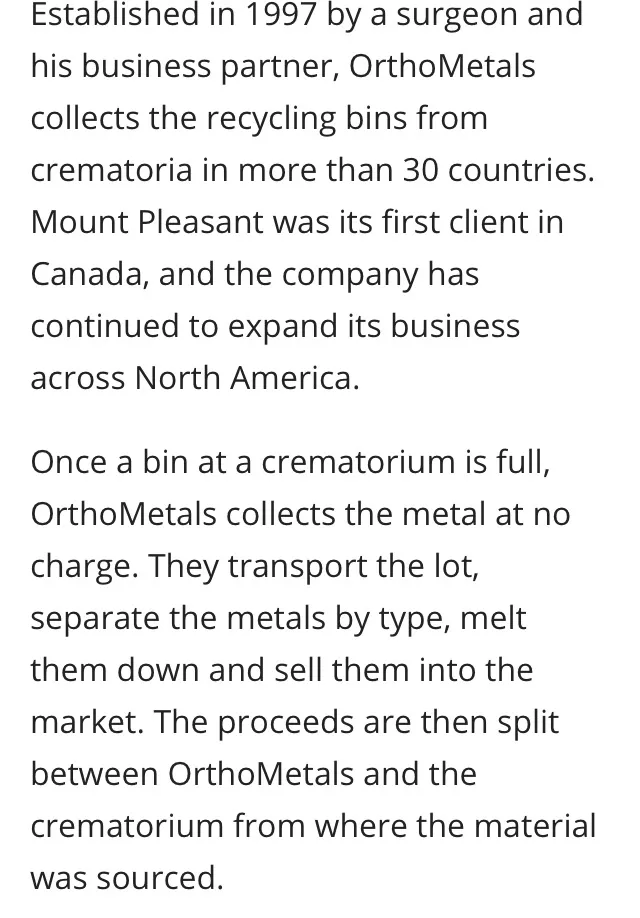
"In 1997, Jan Gabriëls and Ruud Verberne founded OrthoMetals. Jan was an orthopaedic surgeon and Ruud a logistic manager and recycling expert. The combination of an innovative idea and experience resulted in a great solution: the recycling of metals remaining after cremation. Since the start in 1997, the business has grown extensively, providing service to over 700 crematoria in 20 countries worldwide today." source
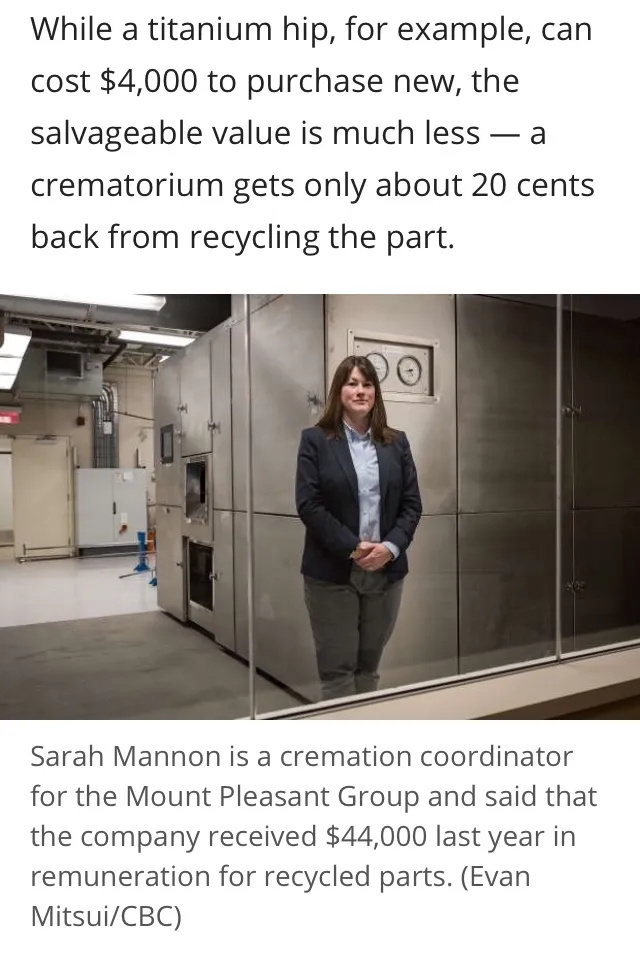
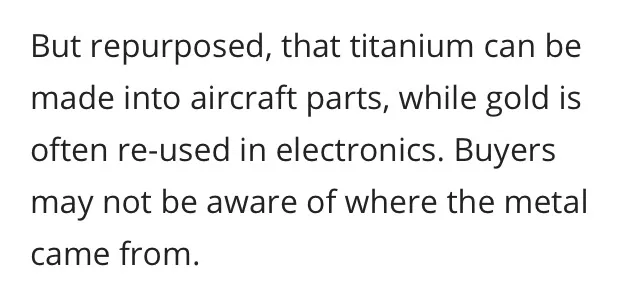
"Ruud Verberne, owner of OrthoMetals, said: ‘Metals reclaimed from cremations are being increasingly re-used. High-value metals such as cobalt go into the aircraft or automotive industries.
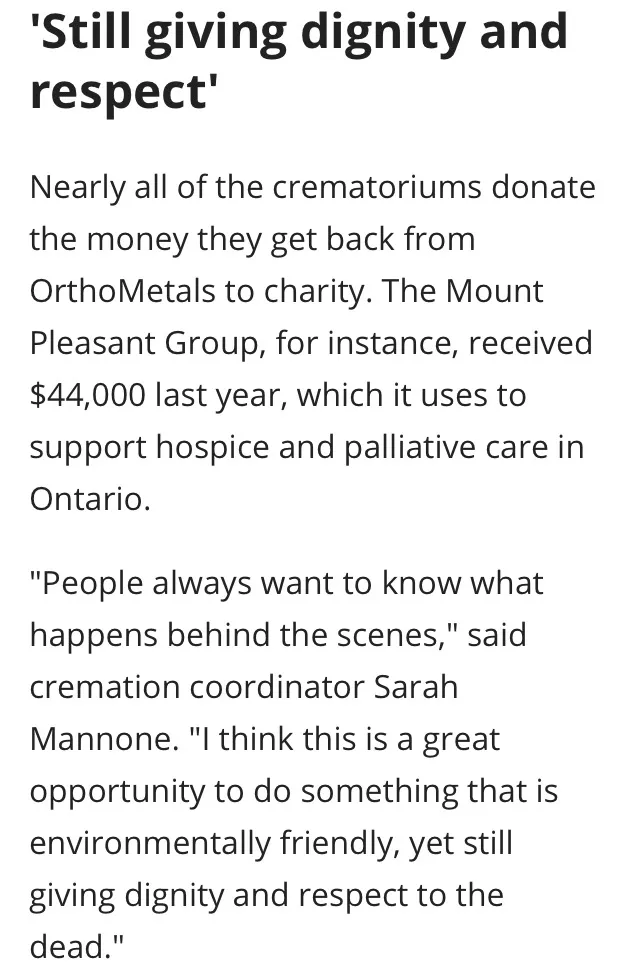
‘Others are sold to smelters and foundries and it is possible that they end up as road signs or motorway barriers – there’s no way of knowing." source
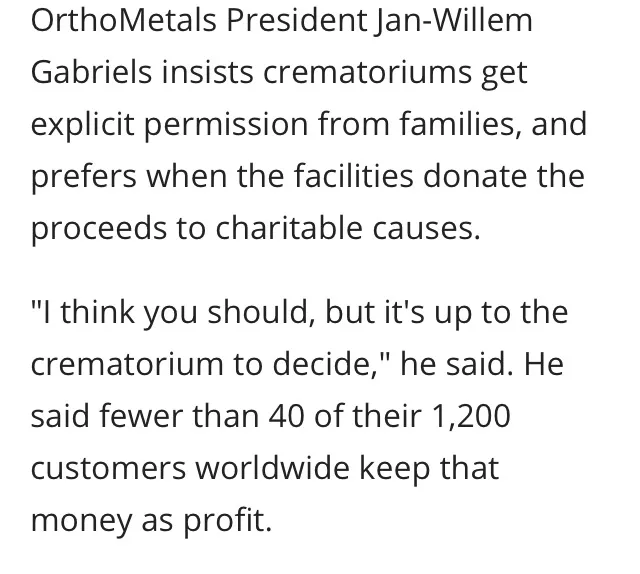
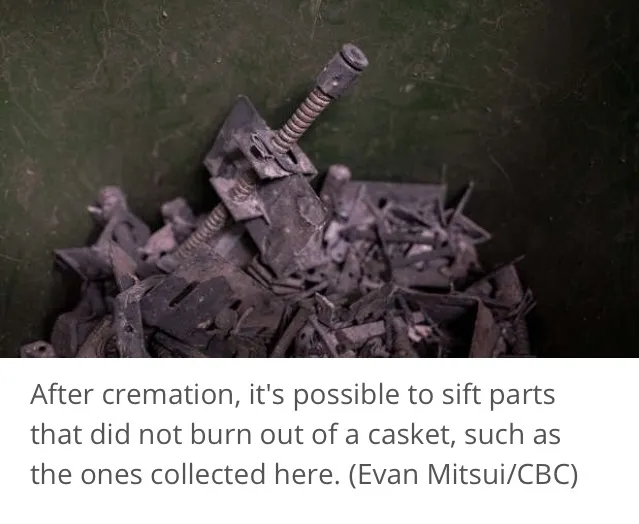
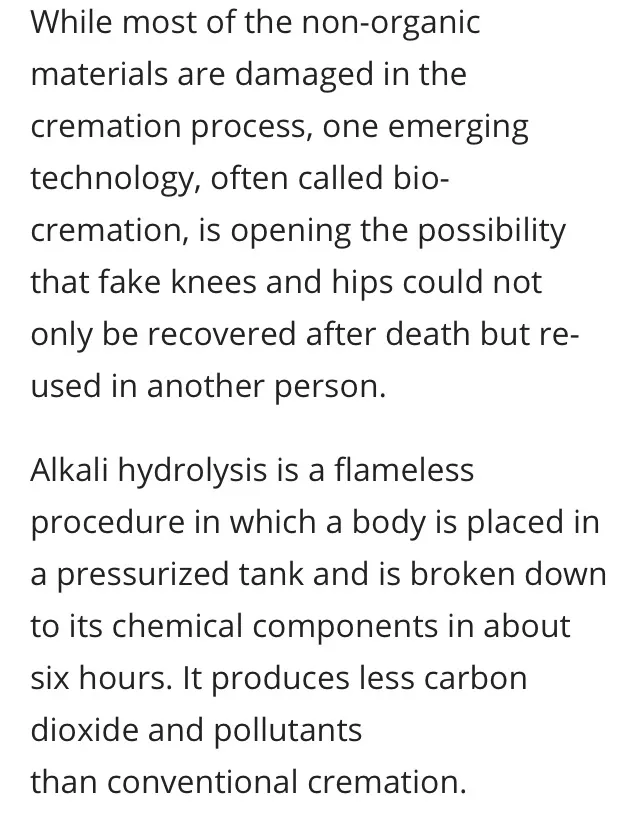
"When they open up the chamber, all that’s remaining is bones. And those can be pulverized into fine powder, according to KQED.
And the liquid that’s left over? That goes into an “accumulation tank,” according to Wired. The Associate Press described the fluid as “brownish, syrupy residue.” The liquid can be poured into the sewage system with no trouble, according to Scientific American."
"One worry might be amount of water used in the process—about 300 gallons per corpse. Gloria says this might be a consideration during droughts but is otherwise a drop in the bucket. “If every Californian who died in one year used water cremation, it would amount to 64 million gallons of water in that year,” he says. “One L.A. [water] treatment plant uses more than 500 million gallons in a day.”
"Of greater concern is the high pH involved in the process, which scuttled the first California bill seeking to legalize alkaline hydrolysis. The machine at U.C.L.A. discharges waste that is a stronger base than a typical household drain unclogging fluid; it exceeds pH 11, the limit for discharge into the environment set by Los Angeles to protect against corrosion of skin and metal. Other cities have even stricter standards. In San Francisco nothing beyond pH 9 can go down the drain. Fisher’s device can add acid to lower pH before disposing of the remains; others bubble in carbon dioxide. But California is not taking chances. Responding to concerns from the California Association of Sanitation Agencies, the new bill requires funeral homes offering alkaline hydrolysis to apply to their local water authority for a permit to send the liquid remains into the sewer on-site—or to pay a company experienced in biological waste disposal to get rid of them." source
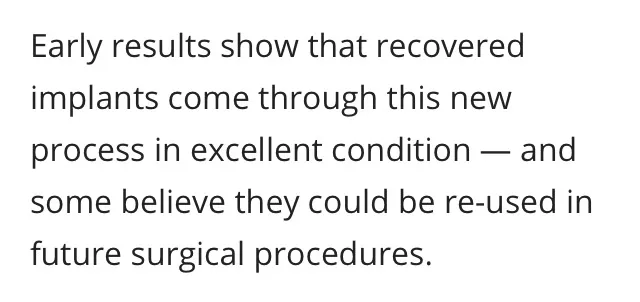
Final thought
Ok, I get it. Yeah, sure why not reuse those implants? That's not my point, there's a much deeper psychology within the article that concerns me. The association of recycling to human bodies. Now to be honest, I'm not a very warm person, so the idea doesn't disturb me per sé.
However, what bothers me is the underlining agenda at play. This article is merely a precursor to the prediction in Aldous Huxley's book. Whether he wrote Brave New World as a warning or as a road map of the future. The fact remains the goal is to dehumanize us and reduce us to nothing more than recyclable parts. But not until they have completely conditioned and familiarized us to that idea.
I myself can't stop it, but I sure can point out the real narratives behind this story. This altruistic piece is really about changing the way you see death, as nothing more than a potential aircraft or road sign. (Eventually fertilizer)
Mark my words: "Today it is implant recovery, tomorrow it will be phosphorus recovery."
Would love to read your thoughts and questions, so please leave'em below. Thanks for reading!



